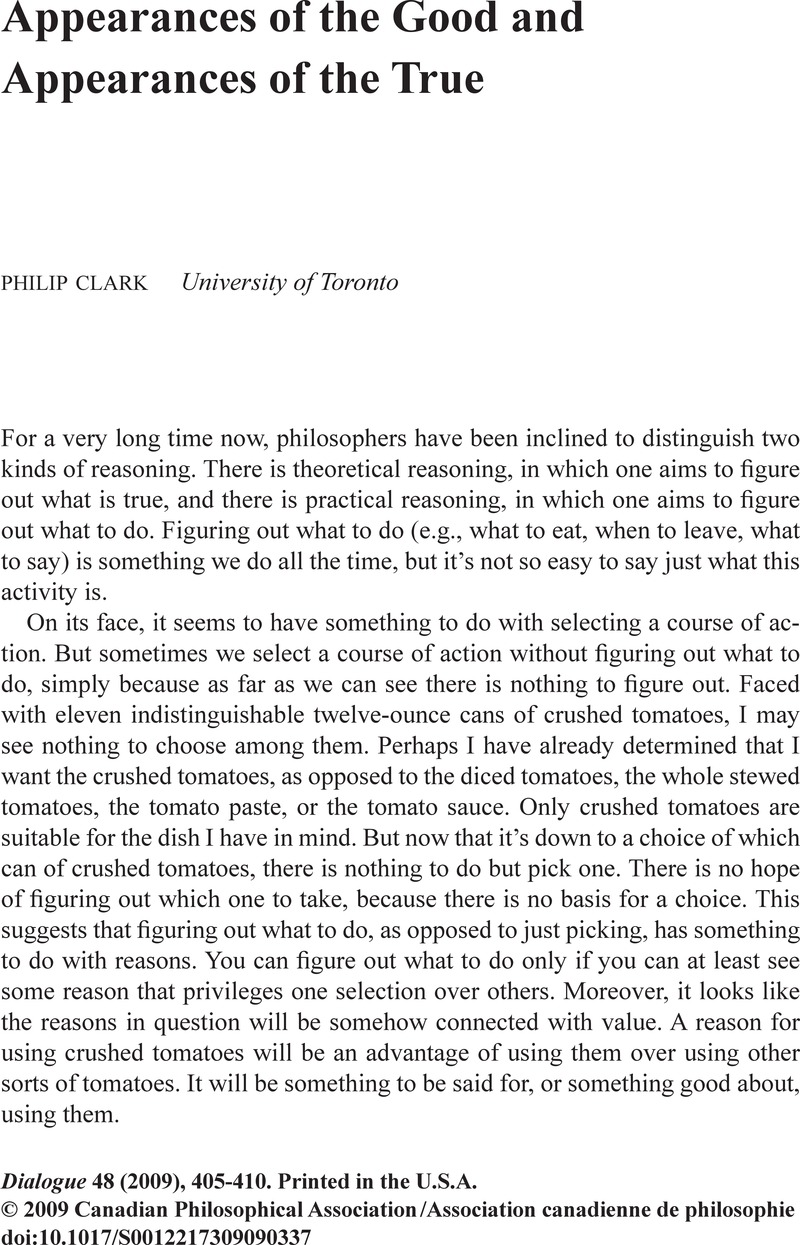No CrossRef data available.
Published online by Cambridge University Press: 01 June 2009

1 I don’t mean to rule out, here, the possibility that success in practical reasoning is a kind of knowledge that is also action.
2 Donald Davidson, “How is Weakness of the Will Possible?” in Essays on Actions and Events (Oxford: Clarendon Press, 1980), pp. 21-42.
3 Sergio Tenenbaum, Appearances of the Good (Cambridge: Cambridge University Press, 2007), pp. 73-4.
4 Ibid., p. 39.
5 In conversation Tenenbaum has used the example of jinxes to illustrate the idea of an appearance of the true. Many of us have trouble shaking the feeling that if we predict some good event, this will reduce the chance of its happening. By analogy, we could imagine a Satan who goes around saying, “I just can’t shake the feeling that these things I’m doing are good.” But it would be odd to think Satan has to be like that.